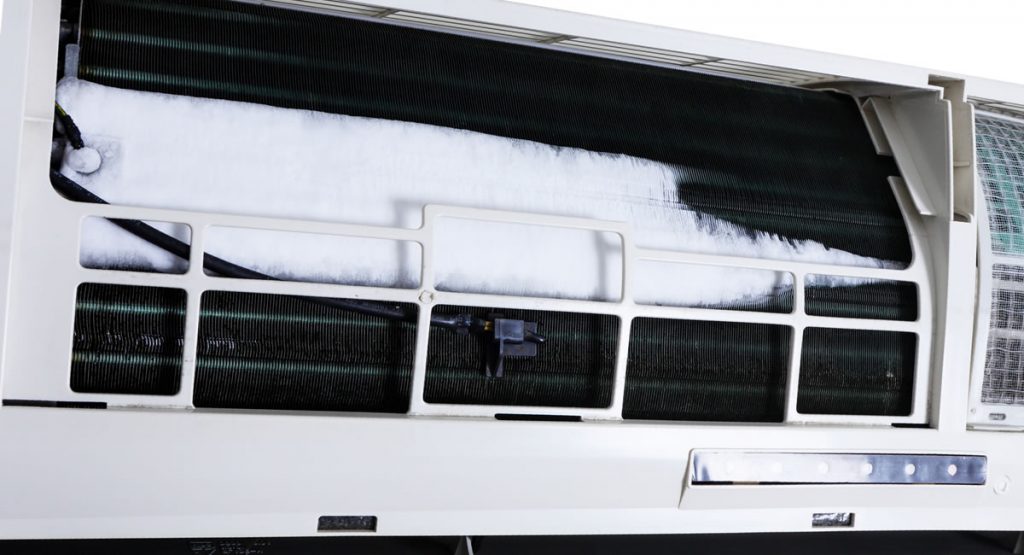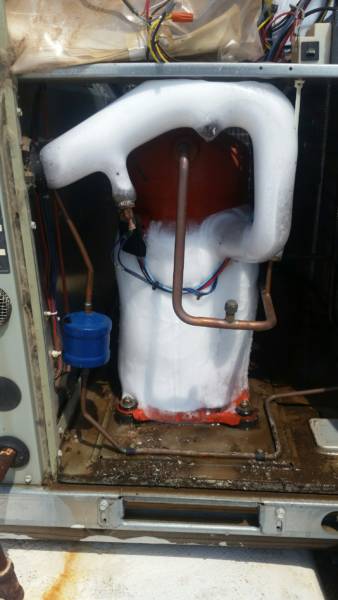Tips for Thawing a Frozen AC Pipe - Reinstating Normal Functionality
Tips for Thawing a Frozen AC Pipe - Reinstating Normal Functionality
Blog Article
How do you feel about Air Conditioner Frozen? How To Fix your Frozen AC Line?

Intro
Discovering that your air conditioner pipeline is frozen can be worrying, especially during warm summer months when you rely upon your ac unit the most. Recognizing what to do in such a situation is important to prevent further damage to your air conditioning system and guarantee your convenience inside.
Recognizing the Causes
A number of variables can add to the cold of an a/c pipeline. Comprehending these reasons can assist you address the concern properly.
Lack of Airflow
One typical reason for a frozen AC pipeline is inadequate air movement. When the air flow over the evaporator coil is limited, it can trigger the coil to go down below freezing temperature level, causing ice formation on the pipe.
Reduced Refrigerant Levels
Inadequate cooling agent levels in your a/c system can also result in an icy pipe. Low cooling agent degrees can cause the stress in the system to go down, leading to the freezing of moisture on the evaporator coil.
Cold Weather Conditions
In cooler climates, freezing temperatures outside can add to the freezing of AC pipelines. If your air conditioner device is not properly insulated or if there are leaks in the ductwork, cold air can infiltrate the system, causing the pipe to freeze.
Dirty Air Filters
Dirty or clogged air filters can limit air movement in your a/c system, causing different issues, consisting of an icy pipeline. It's vital to change or clean your air filterings system regularly to make certain appropriate airflow and protect against ice build-up.
Indicators of a Frozen Air Conditioning Pipe
Identifying the signs of an icy air conditioning pipeline is vital for prompt activity.
Minimized Airflow
If you see a considerable decline in airflow from your vents, it might suggest an icy pipe.
Ice Buildup on the Pipe
Visible ice accumulation on the cooling agent line or the evaporator coil is a clear indicator of an icy air conditioner pipeline.
Strange Sounds from the Unit
Unusual audios, such as hissing or gurgling, originating from your AC unit can signal that there's ice existing on the pipe.
Immediate Actions to Take
When confronted with an icy a/c pipe, it's essential to act rapidly to prevent further damages to your air conditioning system.
Turning off the air conditioner
The very first step is to shut off your a/c to avoid the system from running and intensifying the issue.
Looking for Blockages
Check the area around the interior system for any blockages that may be obstructing airflow, such as furniture or drapes.
Defrosting the Pipe
You can use gentle approaches like putting towels taken in cozy water around the frozen pipeline to aid thaw it slowly.
Safety nets
Taking preventive measures can assist avoid future events of an icy AC pipe.
When DIY Methods Fail
If your efforts to thaw the pipe or address other problems are unsuccessful, it's time to call a specialist.
Relevance of Hiring a Professional HVAC Technician
A qualified HVAC service technician has the know-how and tools necessary to detect and fix problems with your AC system securely and efficiently.
Normal Maintenance Checks
Set up routine maintenance get in touch with an expert HVAC professional to ensure that your a/c system is running efficiently.
Altering Air Filters
Regularly replace or cleanse your air filters to prevent air flow constraints and maintain optimal efficiency.
Protecting Exposed Pipes
If your a/c pipelines are revealed to chilly temperatures, think about protecting them to avoid freezing throughout cold weather.
Looking For Professional Help
If DIY techniques stop working to fix the issue or if you're unsure concerning exactly how to proceed, it's best to look for support from a qualified HVAC service technician.
Final thought
Dealing with a frozen a/c pipe can be an irritating experience, however recognizing exactly how to react can assist minimize damages and recover comfort to your home. By recognizing the causes, identifying the signs, and taking timely activity, you can efficiently attend to the issue and protect against future occurrences.
G UP? HOW TO FIX IT?
It happens all over America. And the rest of the world probably. It’s the hottest day ever and for some darn reason your AC isn’t cooling the house. You fiddle with the thermostat to try and fix the problem. Nada. All you can do now is go outside and check the AC unit. You make your way there and find your air conditioner unit is frozen! But how?
In this post we’ll cover how you can tell that your air conditioner has frozen (other than the obvious reasons), what could have caused the freeze, and some of the things you can do about your AC freezing up. And if you have a frozen heat pump condenser, read our blog about it to learn what to do! But remember, it is always best to avoid your AC freezing up with an AC tune up. And if you are moving into a home, it's critical to get HVAC inspection so that you are aware of an AC problems before you move in.
Keep reading and you may be able to fix the frozen AC yourself. If you can’t, call an HVAC specialist. If you live in Maryland, call SuperTech HVAC for AC repair. We’ll take care of it.
How Does An Air Conditioning Unit Work?
How you probably imagine an AC works is wrong. Contrary to popular belief, an AC system does not inject cool air into a building. Instead, it removes the heat from inside and transfers it outside. Cool huh? (Pun intended).There are 4 major components among the 3 stations of an air conditioning system: the evaporator coil, the compressor, the condenser, and the refrigerant – a special chemical that links everything together through a closed loop system.
Station 1:
Warm indoor air is sucked into the return vent, through a filter, and blows over the evaporator coil. The heat is absorbed into the cold refrigerant, turning it from liquid to gas. The air, which is now cool, is blown back into the home to areas that your thermostat, i.e. you, has decided.
Station 2:
The refrigerant makes its way outside the house to the compressor, which squeezes the warm refrigerant, raising its gaseous temperature even more.
Station 3:
When the super hot vapor refrigerant reaches the condenser, the last step, the heat is expelled and absorbed into the outdoor air. The refrigerant instantly cools, which changes it from gas back to liquid form. The cold liquid refrigerant is now ready to return to station 1 and repeat the process.
Is Your AC Freezing Up? Here Are The Signs:
As you may have guessed, your air conditioner unit freezing up on a hot day is not normal.
If this happens, there's no need to panic. Often the issue can be solved with a little troubleshooting. If the AC unit is left frozen for too long however, you may find yourself with a bigger problem.
First things first, how do you know your AC is frozen?
Well, the obvious sign is the ice on your refrigerant line-set pipe. Simply check between your outdoor AC unit and your home's exterior wall to see whether your AC line frozen.
You might also have a frozen evaporator coil. This one's not as easy to check. You'll need to open a panel on the indoor unit to inspect. Don't do this unless you're handy. If you aren't, call an HVAC pro like SuperTech HVAC or you may damage something in the process.

Hopefully you liked our post on How can I fix an air conditioner’s frozen pipe?. Thank you for taking a few minutes to read through our post. Liked our entry? Please share it. Let somebody else discover it. We thank you for reading our article about Have a Frozen AC Line? Here’s How to Fix It.
Click Here Report this page